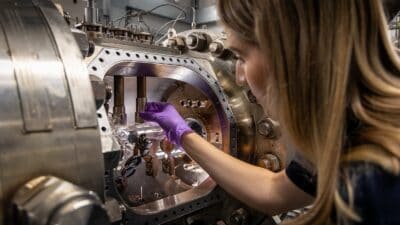For any investment to deliver a 100% total return within five years it must post annualised returns of just under 15%. With the FTSE 100 having experienced total returns of 9.5% per annum since its inception in 1984, any stock wishing to double within five years must offer significantly better performance than the wider index’s likely long term outcome.
In the case of Barclays (LSE: BARC), it has the potential to more than double within five years. A key reason for this is its ultra-low valuation. For example, it trades on a price to earnings (P/E) ratio of just 10, which indicates that there is significant upward rerating potential. In fact, if Barclays were to trade on the same P/E ratio as the FTSE 100 of around 14, it would mean that its shares rise by 40% from their current level.
In addition, Barclays is also forecast to increase its bottom line by 19% next year. So, even if its earnings growth rate reverts to that of the wider index (i.e. mid to high single digit per annum) in the following four years, it would still mean that the bank’s net profit would be around 56% higher by the end of 2020, assuming a 7% earnings growth rate. This, plus the aforementioned upward re-rating potential, would be sufficient for Barclays’ shares to more than double within five years, with dividends boosting its total return yet further.
Similarly, challenger bank Aldermore (LSE: ALD) could also post 100% total returns within the same timeframe. Like Barclays, it trades at a large discount to the FTSE 100, with its shares having a P/E ratio of just 12.3. As a result, there is scope for an upward re-rating and if they were to trade at the same valuation as the wider index, it would mean Aldermore’s shares being priced around 14% higher.
Furthermore, Aldermore is forecast to increase its bottom line by 18% next year and, since it is a challenger bank, it may be more likely to maintain a higher rate of growth in the following years than will Barclays. That’s especially relevant, since the loose monetary policy which has benefitted Aldermore and other challenger banks through increasing demand for new loans is set to remain in place over the medium term.
As a result, if Aldermore can maintain a double-digit earnings growth rate from 2017 through to 2020 then its earnings per share would reach 37.6p. When multiplied by a rating of 14, this would equate to a share price of 526p, which would represent a doubling from its present price level.
Meanwhile, interdealer broker ICAP (LSE: IAP) also has excellent long term growth potential. It trades on a price to earnings growth (PEG) ratio of just 1.3, which indicates that its shares offer strong growth prospects at a very reasonable price.
However, unlike Barclays and Aldermore, there is a lack of upward re-rating potential, since ICAP has a P/E ratio of 15.9. And, while its bottom line is set to rise by 10% next year, even if such a rate of growth is maintained in the next five years it would equate to a rise of only 61% in value, assuming ICAP maintains its present premium rating.
Looking at the company’s track record, though, profit has fallen in two of the last five years. This indicates that five years of double-digit growth may be unlikely and, while ICAP has a 4.7% yield which could contribute 26% in returns over five years, the prospect of a 100% total return by the end of 2020 appears to be rather slimmer than for Barclays or Aldermore.







